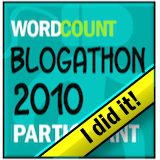I like my clients to use Track Changes to show me their edits. But I prefer to turn it off on the versions I send them.
When my clients use Track Changes, I can study their changes to improve my insights into their topic as well as their likes and dislikes. Also, Track Changes shows me where to concentrate my scrutiny of their revisions. Sometimes clients inadvertently introduce typos, grammatical errors, or other problems.
If you become my client, I probably won't use Track Changes when I send my revisions to you. I believe it's easier for you to assess my work without the distraction of insertions and deletions in red. In addition, I don't want to bore you with the minutiae of whether "which" should replace "that." However, I'll alert you in my cover note--or using Word's "Comment" feature, if I have questions.
I'm writing about this topic because of an interview I heard on National Public Radio with the co-authors of a new book on the brain. One of the authors said something like this:
We made a rule that we weren't going to use Track Changes when we passed changes back and forth because if a change wasn't important enough to notice, then it wasn't important enough to complain about.What's your preference about Track Changes? Why?
_________________
Susan B. Weiner, CFA
Investment Writing
Writing that's an investment in your success
Check out my website at www.InvestmentWriting.com or sign up for my free monthly e-newsletter.


